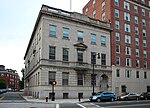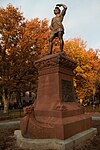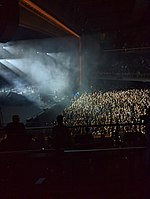Myles Standish Hall

Myles Standish Hall is a Boston University dormitory located at 610 Beacon Street, in Kenmore Square. Originally constructed in 1925 and opened as the Myles Standish Hotel, it was deemed to be one of the finest hotels in the world. In 1949 BU acquired the building and converted it into a dormitory. In 2018, BU completed a comprehensive two-year renovation, completely rebuilding the interior of the building. In 2021, the Massachusett Tribe at Ponkapoag requested the dorm be renamed to Wituwamat Memorial Hall to honor a leading Native American figure massacred by Myles Standish. Robert A. Brown, President of Boston University, responded to this effort and stated Standish's “role in the history of the founding of Massachusetts, and thus our nation, was significant. To remove his name from the residence hall would discount his significant role in our history. I am not prepared to remove his name at this time.”
Excerpt from the Wikipedia article Myles Standish Hall (License: CC BY-SA 3.0, Authors, Images).Myles Standish Hall
Beacon Street, Boston Fenway / Kenmore
Geographical coordinates (GPS) Address External links Nearby Places Show on map
Geographical coordinates (GPS)
| Latitude | Longitude |
|---|---|
| N 42.349713888889 ° | E -71.094411111111 ° |
Address
Myles Standish Hall
Beacon Street
02115 Boston, Fenway / Kenmore
Massachusetts, United States
Open on Google Maps









